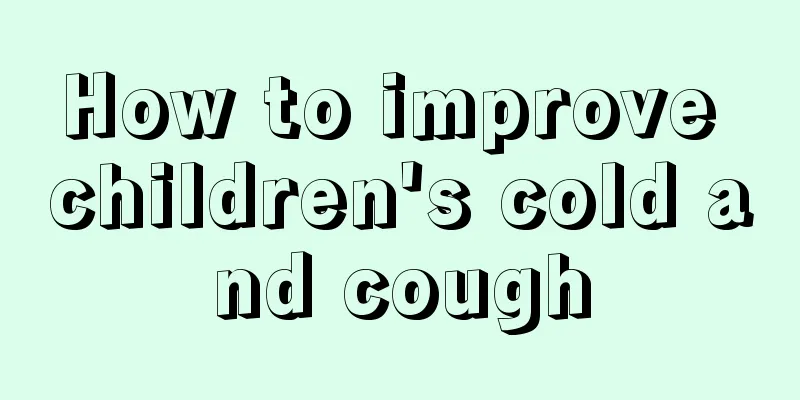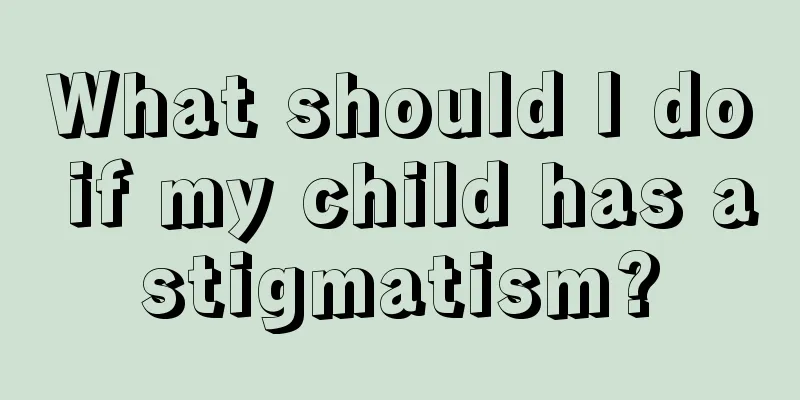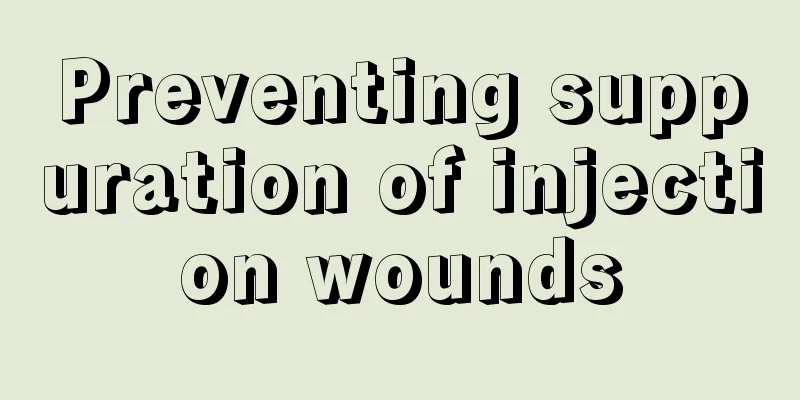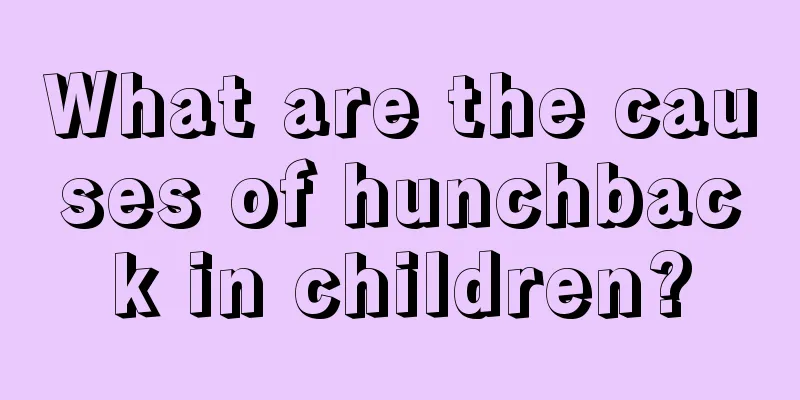Why do babies often have fever?
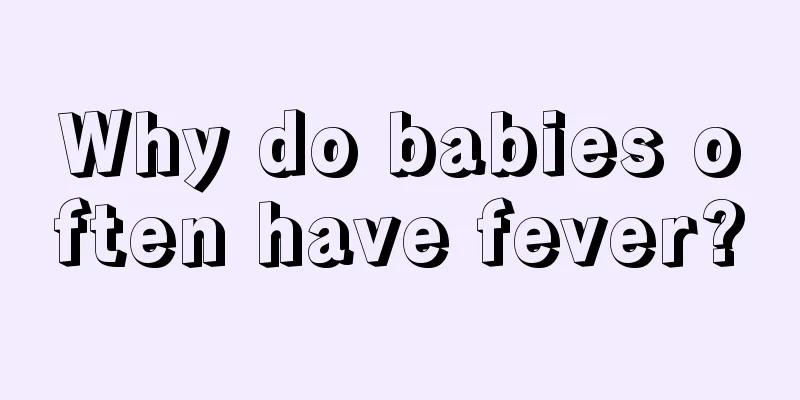
|
Anyone who has taken care of a baby should know that baby fever is a relatively common disease. There are many reasons for this disease. It may be due to weak constitution, parents' failure to take preventive measures, or catching a cold. In short, people need to pay special attention to it, understand the cause of the baby's fever, and then take measures to treat it. So let’s explain why babies often have fever. Recurrent fever may be related to poor physical constitution and low immunity. It may also be related to anemia and zinc deficiency.Suggestions: Hello, please analyze the condition you described. It is recommended that you go to the hospital to check your blood routine and trace elements. If you have iron deficiency anemia, it is recommended that you take oral dextran iron oral solution. If you are zinc deficient, it is recommended that you take oral zinc gluconate and take appropriate calcium supplements. Eat more nutritious foods such as milk, eggs, fish and other foods, and let your baby do more outdoor activities. Do not eat snacks, do not be picky eaters, do not eat raw or cold food, eat regularly, and take the immune-enhancing drug pidotimod orally. Misconceptions about treating baby's fever: Myth 1: Bathing will make children catch a cold Bathing your child with warm water is actually a cooling measure, which is medically known as physical cooling. Similar methods include applying a wet towel to the head, using an ice bag as a pillow, rubbing the body with alcohol, etc. The purpose is to use the thermal conductivity of water, or the heat absorption when ice melts and alcohol evaporates to lower body temperature. In addition, bathing can keep the skin clean and prevent sweat glands from being blocked. The specific method is to soak in warm water 2°C below body temperature for 20 minutes, 2 to 3 times a day. As long as you are not in a room with very low temperature, dry yourself promptly after taking a shower, and avoid being blown by wind, you will not catch a cold.
High fever can also increase the metabolism of various nutrients and oxygen consumption, so it is right to pay attention to nutritional supplements for children. However, it is wrong to supplement children's nutrition by giving them broth. Because high fever reduces the activity of digestive enzymes and affects the child's digestive function, eating greasy food at this time will not only fail to be absorbed, but will cause vomiting or diarrhea, aggravating the body's dehydration. At this time, children should be given light, easily digestible food, such as porridge, vegetable soup, fruit juice, egg custard, etc. In addition, give your child plenty of water to drink, preferably salt water. On the one hand, this can replenish lost water and electrolytes, and on the other hand, it can achieve the purpose of cooling down. Myth 3: Fever subsides and illness is cured In real life, there are many parents who mistakenly believe that the disease will be cured once the fever subsides, which often leads to the child's fever recurring or the original disease worsening and delayed treatment. Fever is only a single symptom of a certain disease. The disappearance of fever only indicates that the body's regulatory mechanism of heat production and heat dissipation has returned to normal, and it does not mean that the disease is cured. Only by eliminating the cause of the disease and fundamentally correcting the basis of the disease can the disease be cured.
Children are prone to fever when they are sick, but a fever does not necessarily mean they are sick, because a child's body temperature is affected by many factors. For example, feeding, exercise, crying, wearing too many clothes, etc. can all cause a child's body temperature to temporarily rise to 37.5℃, occasionally to 38℃. Newborns or infants are especially more susceptible to the above conditions. In addition, the method and time of measuring body temperature also affect the actual value of the measured temperature. For example, the values measured by axillary, oral, and rectal thermometers differ by about 0.5°C, that is, the axillary temperature is the lowest and the rectal temperature is the highest. The best time to measure axillary temperature is 10 minutes. Therefore, a temporary rise in the child's body temperature can be considered normal as long as the child is in good general condition and has no subjective symptoms. But when the child's body temperature is higher than 38.5℃, it should be taken seriously. |
<<: What is the reason for a one-year-old baby to have repeated fever?
>>: What should I do if my baby is vomiting, having diarrhea and having a fever?
Recommend
Three-year-old baby has developmental delay
We all know that babies need a certain amount of ...
What to do if a baby girl has hernia
Many girls are particularly prone to hernia. Hern...
What to do if your child's ears itch
When the sensory nerve endings in the skin of the...
Symptoms of rickets in babies
Parents need to pay attention to the baby's b...
What are the symptoms and treatments of ADHD in children?
Attention Deficit Hyperactivity Disorder (ADHD) i...
What to do if your child has a nosebleed due to internal heat
Many children have nosebleeds due to getting too ...
Brown urine in children
In our lives, many children have yellow or brown ...
The reason why the baby falls and hits the ground with the back of his head
In fact, the center of gravity of babies aged one...
What to do if your child has a stomachache and fever
We all know that our baby is the apple of our eye...
What to do if your child has trouble breathing while sleeping
It is the common wish of all parents that every c...
What should I do if my baby always sweats?
Babies belong to a group that does not sweat easi...
Is it normal for children to lose their hair?
It is not normal for children to lose hair freque...
How to deal with red spots on children's feet
The physical health of children is an issue that ...
What to do if your child has knee pain
What should I do if my child has knee pain? What ...
What are the red spots on the baby's face?
What's going on with the red spots on the bab...


